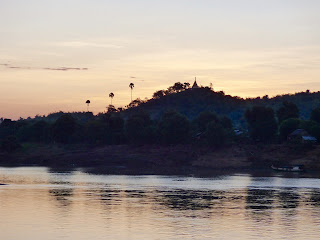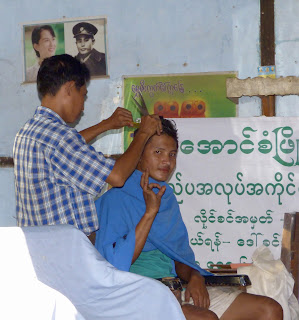il 8 novembre
Early morning on the Irrawaddy
Sri Kestra (Thayekhittaya) was the largest of the cities built by the Pyu people that ruled in the area between the fifth and ninth centuries. Their civilization, once stretching north to south for hundreds of kilometers along the Irrawaddy River, had advanced irrigation techniques and played a large part in the introduction of Buddhism to Myanmar. Invaded by the Mon tribe and, later, the Burmans, it was ultimately taken over by the British in the 19th century. Left to ruin, excavations began there in 1907 and have revealed extensive remains of Theravada Buddhism and religious art showing the influence of southern India. Some of the world’s earliest Buddhist monuments are found in Sri Kestra (“Fabulous City” in the Pali language), but, built of brick, the ancient sacred structures are in a state of deterioration due to heavy rain. Erosion has loosened bricks causing walls and arches to collapse. A museum has been built on site and, as artifacts - beads, coins, Buddha images, and statues of Hindu deities, are discovered, they become part of a fascinating introduction into the history of this World Heritage Site.
A bit of early history...
More faces along the way...
`
The hilltop Shwesandaw Pagoda, in the center of town, is one of Myanmar’s biggest pilgrimage sites and offers panoramic views of the river and the lush surroundings. It is believed to have been built in 589 BC and that four strands of hair from Gautama Buddha are found within.

















































